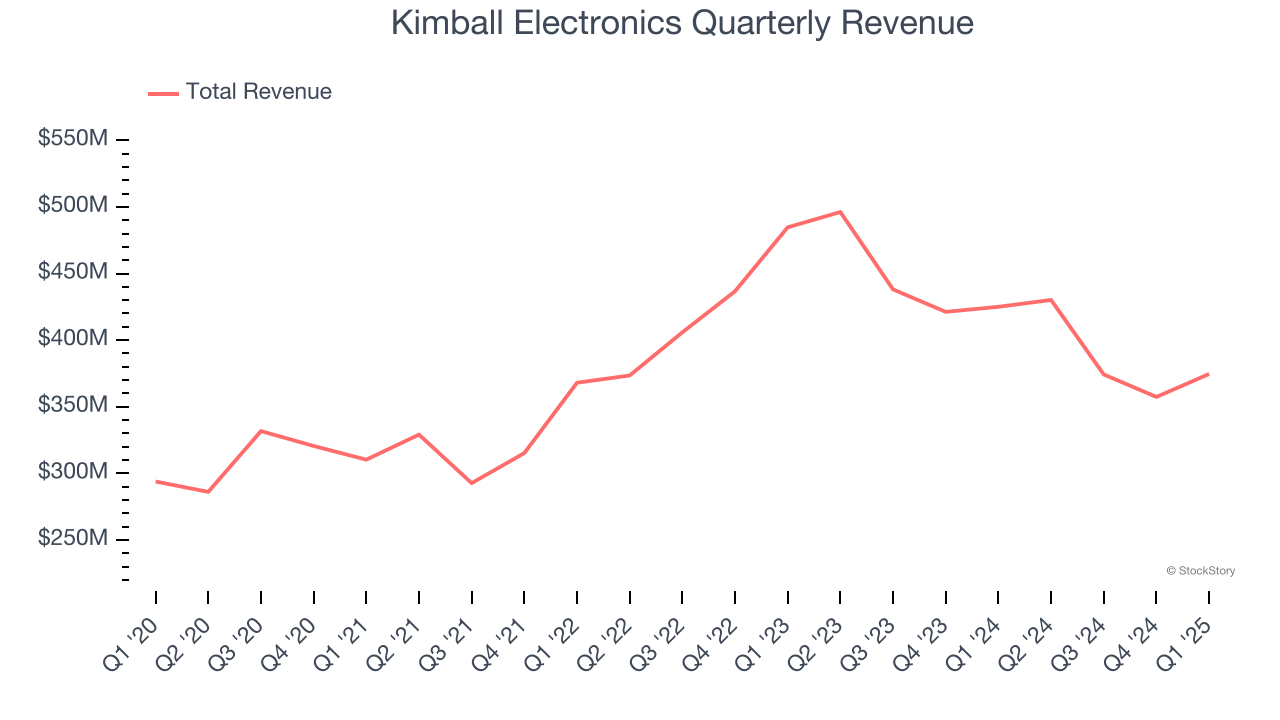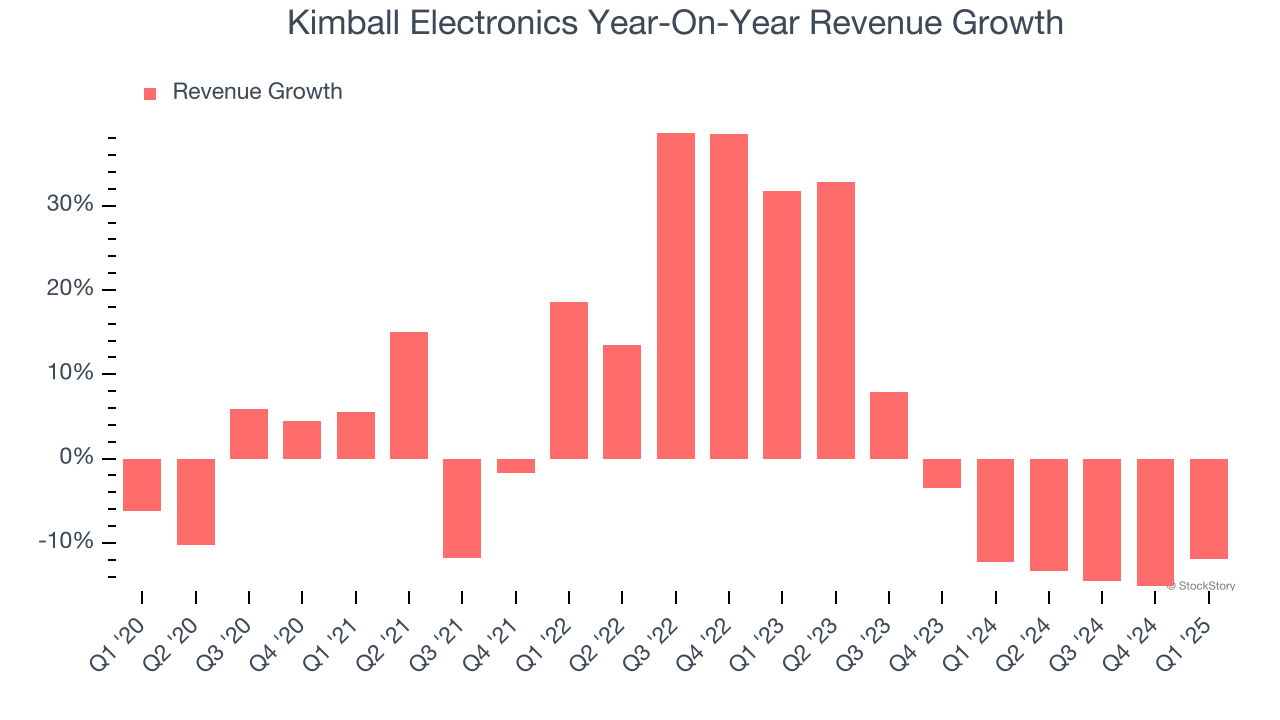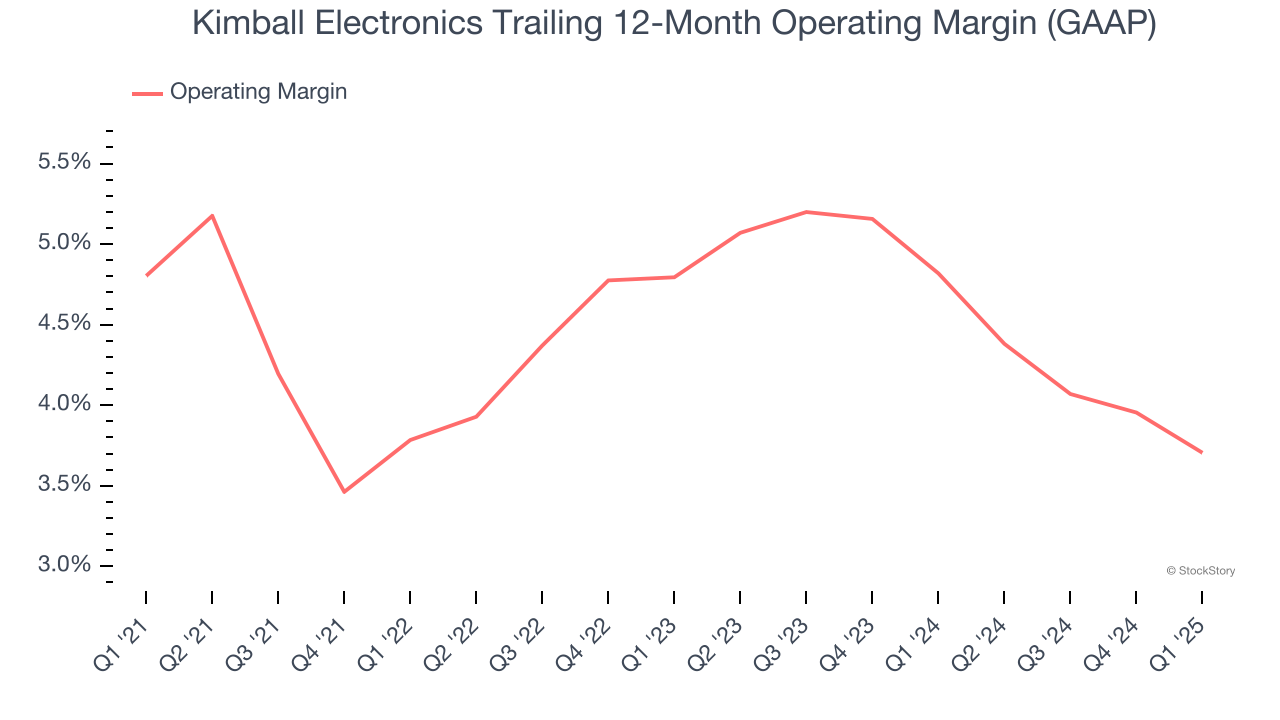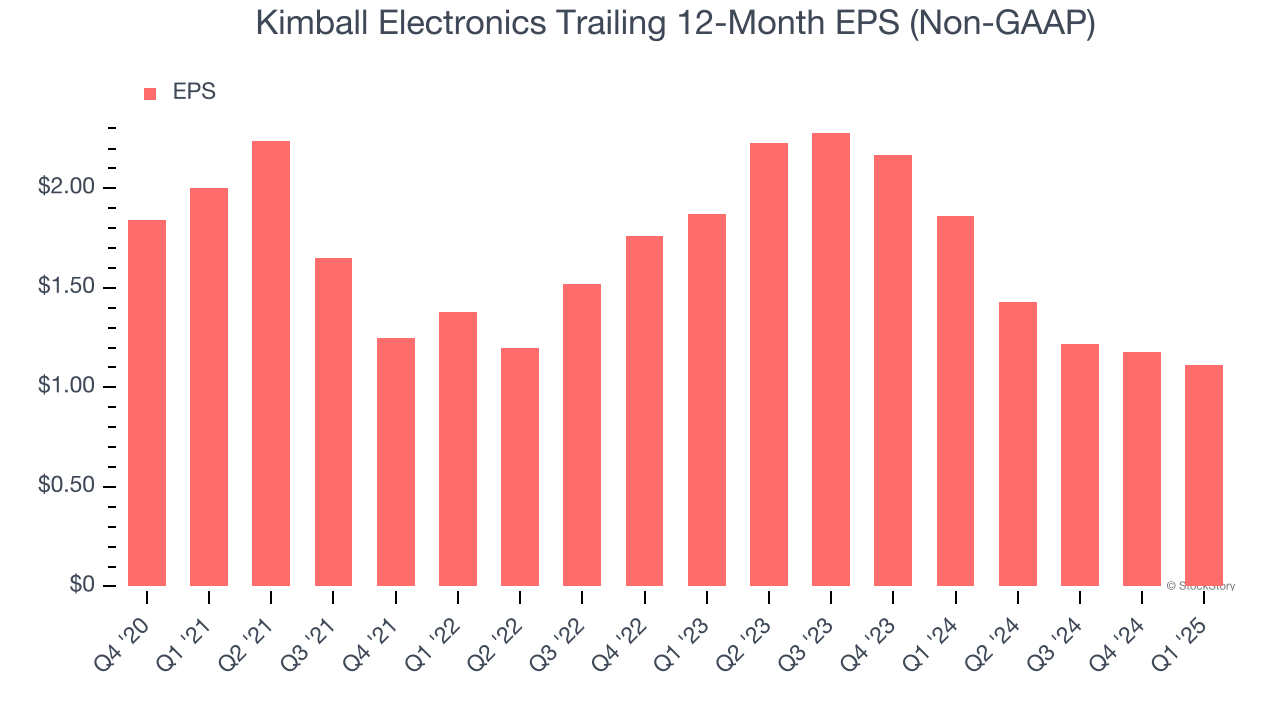
Global electronics contract manufacturer Kimball Electronics (NYSE: KE) reported revenue ahead of Wall Street’s expectations in Q1 CY2025, but sales fell by 11.9% year on year to $374.6 million. The company expects the full year’s revenue to be around $1.42 billion, close to analysts’ estimates. Its non-GAAP profit of $0.27 per share was 42.1% above analysts’ consensus estimates.
Is now the time to buy Kimball Electronics? Find out by accessing our full research report, it’s free.
Kimball Electronics (KE) Q1 CY2025 Highlights:
- Revenue: $374.6 million vs analyst estimates of $338.1 million (11.9% year-on-year decline, 10.8% beat)
- Adjusted EPS: $0.27 vs analyst estimates of $0.19 (42.1% beat)
- The company reconfirmed its revenue guidance for the full year of $1.42 billion at the midpoint
- Operating Margin: 3.1%, down from 4.1% in the same quarter last year
- Free Cash Flow Margin: 28.3%, up from 7.1% in the same quarter last year
- Market Capitalization: $360.2 million
Company Overview
Founded in 1961, Kimball Electronics (NYSE: KE) is a global contract manufacturer specializing in electronics and manufacturing solutions for automotive, medical, and industrial markets.
Sales Growth
A company’s long-term sales performance is one signal of its overall quality. Any business can put up a good quarter or two, but the best consistently grow over the long haul. Over the last five years, Kimball Electronics grew its sales at a sluggish 4.5% compounded annual growth rate. This fell short of our benchmark for the industrials sector and is a rough starting point for our analysis.

Long-term growth is the most important, but within industrials, a half-decade historical view may miss new industry trends or demand cycles. Kimball Electronics’s performance shows it grew in the past but relinquished its gains over the last two years, as its revenue fell by 5% annually. Kimball Electronics isn’t alone in its struggles as the Electrical Systems industry experienced a cyclical downturn, with many similar businesses observing lower sales at this time. 
This quarter, Kimball Electronics’s revenue fell by 11.9% year on year to $374.6 million but beat Wall Street’s estimates by 10.8%.
Looking ahead, sell-side analysts expect revenue to decline by 8.2% over the next 12 months, a deceleration versus the last two years. This projection doesn't excite us and indicates its products and services will see some demand headwinds.
Software is eating the world and there is virtually no industry left that has been untouched by it. That drives increasing demand for tools helping software developers do their jobs, whether it be monitoring critical cloud infrastructure, integrating audio and video functionality, or ensuring smooth content streaming. Click here to access a free report on our 3 favorite stocks to play this generational megatrend.
Operating Margin
Operating margin is an important measure of profitability as it shows the portion of revenue left after accounting for all core expenses – everything from the cost of goods sold to advertising and wages. It’s also useful for comparing profitability across companies with different levels of debt and tax rates because it excludes interest and taxes.
Kimball Electronics was profitable over the last five years but held back by its large cost base. Its average operating margin of 4.4% was weak for an industrials business. This result isn’t too surprising given its low gross margin as a starting point.
Looking at the trend in its profitability, Kimball Electronics’s operating margin decreased by 1.1 percentage points over the last five years. This raises questions about the company’s expense base because its revenue growth should have given it leverage on its fixed costs, resulting in better economies of scale and profitability. Kimball Electronics’s performance was poor no matter how you look at it - it shows that costs were rising and it couldn’t pass them onto its customers.

In Q1, Kimball Electronics generated an operating profit margin of 3.1%, down 1 percentage points year on year. Since Kimball Electronics’s operating margin decreased more than its gross margin, we can assume it was less efficient because expenses such as marketing, R&D, and administrative overhead increased.
Earnings Per Share
We track the long-term change in earnings per share (EPS) for the same reason as long-term revenue growth. Compared to revenue, however, EPS highlights whether a company’s growth is profitable.
Kimball Electronics’s full-year EPS dropped 67.1%, or 13.7% annually, over the last four years. We tend to steer our readers away from companies with falling revenue and EPS, where diminishing earnings could imply changing secular trends and preferences. If the tide turns unexpectedly, Kimball Electronics’s low margin of safety could leave its stock price susceptible to large downswings.

Like with revenue, we analyze EPS over a shorter period to see if we are missing a change in the business.
Sadly for Kimball Electronics, its EPS declined by more than its revenue over the last two years, dropping 23%. This tells us the company struggled to adjust to shrinking demand.
Diving into the nuances of Kimball Electronics’s earnings can give us a better understanding of its performance. Kimball Electronics’s operating margin has declined by 2.4 percentage points over the last two years. This was the most relevant factor (aside from the revenue impact) behind its lower earnings; taxes and interest expenses can also affect EPS but don’t tell us as much about a company’s fundamentals.
In Q1, Kimball Electronics reported EPS at $0.27, down from $0.34 in the same quarter last year. Despite falling year on year, this print easily cleared analysts’ estimates. Over the next 12 months, Wall Street expects Kimball Electronics’s full-year EPS of $1.11 to shrink by 3.4%.
Key Takeaways from Kimball Electronics’s Q1 Results
We were impressed by how significantly Kimball Electronics blew past analysts’ EPS expectations this quarter. We were also excited its revenue outperformed Wall Street’s estimates by a wide margin. Zooming out, we think this quarter featured some important positives. The stock traded up 3% to $15.17 immediately following the results.
Sure, Kimball Electronics had a solid quarter, but if we look at the bigger picture, is this stock a buy? We think that the latest quarter is only one piece of the longer-term business quality puzzle. Quality, when combined with valuation, can help determine if the stock is a buy. We cover that in our actionable full research report which you can read here, it’s free.






